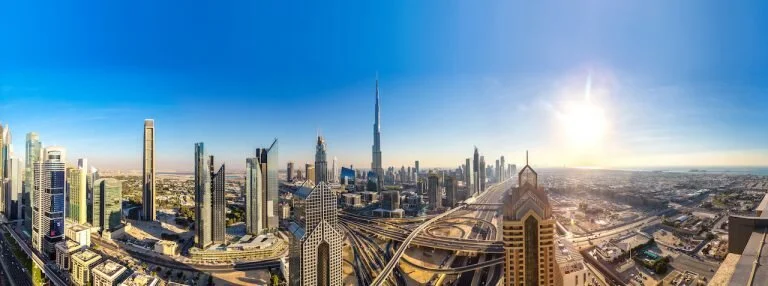In smart cities, the use of technology, information, and data is promoted to enhance and improve the overall infrastructure, quality of life, and publicly accessible services. Negative side effects of living in densely populated urban areas (e.g. environmental pollution and stress-related illnesses) are to be minimized. Typical features of smart cities include 4 main points:
Smart administration and society
Government services in smart cities are made more accessible to people by making them available online. Processes such as registering a business or filing a complaint are simplified by digital offerings while also adhering to data security and protection regulations.
Online service can help improve accountability and transparency while also allowing citizens to take an active part in local governing processes.
Smart housing
Housing in smart cities should be affordable while also ensuring safety and security for its residents. Open and green spaces, public services, community areas, jobs as well as social facilities raise the housing standard in a smart city and enhance the quality of life in any given neighborhood. Poorly planned areas are redeveloped to improve the housing situation there.
Smart mobility
A central aspect of a smart city is its public transit network. Access to public transportation has increased in tomorrow’s cities. To further reduce emissions, smart cities are aimed towards being more pedestrian and cyclist-friendly.
Creative solutions such as smart parking can further help to reduce emissions and environmental pollution, while also decreasing complexity for drivers in a complicated urban environment. Smart parking data reduces traffic hazards and accidents as drivers are not distracted while desperately looking for a parking space.
It also enables drivers to choose the best options to arrive at their desired destination quickly and efficiently.
Smart parking solutions can thus decrease parking search traffic, as drivers know which streets are fully occupied, and they can avoid circling around. In addition, drivers can make intelligent decisions based on precise parking data and choose to park in the nearest garage for example, or take a scooter if on-street parking in the inner city is not available.
Furthermore, smart cities aim to create walkable neighborhoods, where congestion, air pollution, and resource depletion are reduced to promote interactions and boost the local economy. Road networks are improved to not only provide space for vehicles and public transport but also to accommodate cyclists and pedestrians.
Modern surface parking hubs slightly outside the inner city ring should also provide real-time occupancy data for parking, making it appealing for drivers to park their vehicles there and take alternative means of transport – such as e-vehicles or a bus – for the last miles to reduce emissions in the city center.
Smart infrastructure
The infrastructure in smart cities should be geared towards being sustainable and eco-friendly. In addition, many smart cities aim for climate neutrality. Structures for supplying electricity, gas, and hot water, as well as those for the disposal of refuse, need to be transformed to move towards more sustainable infrastructure.
This can be done by reducing the amount of waste generated and more effective recycling of refuse among other things. In addition, the use of natural resources can be reduced by establishing renewable energies.
Interested in learning more about smart city parking solutions? Click the button below to schedule a demo with a smart parking expert now.






